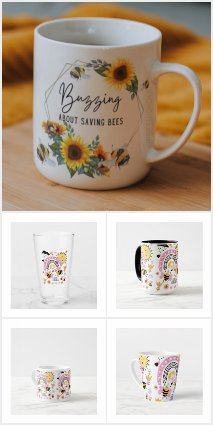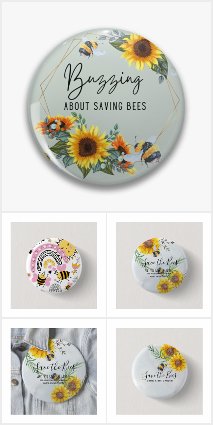Philip Chandler
paraphrased
When I started raising bees in the UK at the turn of the century, the options were National, WBC, or Commercial. The Langstroth was seen as very American, and anything made of straw as quaint at best, and a tragedy waiting to happen at worst. We now have the Warré, the horizontal top bar hive, the Lazutin, the ZEST and other deep boxes, as well as some fascinating skep variations. This has generated two new challenges for the beginner: choosing a hive and attracting bees to it.
It was simple back then: the National was the obvious pick. Those who enjoyed the WBC but disliked the added labour may still use the same frames, although fewer. An overwintering nuc and a hive cost roughly £25 each, and you were a rookie beekeeper.
During the two decades since then, the price of nucs has doubled, and the price of woodenware has risen as well, making beginning a beekeeping business expensive. The usual way costs roughly £500 for a hive with bees and basic equipment.
You can save money on gear by building your own top bar hive (vertical or horizontal), but now you have another problem: getting bees into your hive because a conventional 5-frame nuc won't fit into your odd-shaped box, and suitable nucs are scarce.
I learned about top bar hives by doing radical and irreversible surgery on a conventional nuc's frames and combs to compel it to fit the trapezoidal shape of a horizontal top bar hive. It worked, although it was dirty and required a bee-proof covering over and around the de-framed bars. A better method was needed.
Start with a swarm, was and remains my normal counsel. Begin by luring a swarm into your hive, as this shows they value it highly and are more likely to thrive. In addition to using empty comb from another (healthy) hive as bait, smear wax and propolis around the woodwork and add a few drops of my Magic Swarm Bait (one part geranium essential oil to two parts lemongrass oil).
One of the best things about swarm baiting is that you can establish multiple little hives (ten to twelve bars) in different locations to increase your chances of success. The bad news is that you are dependent on bees discovering your boxes, which is likely in a location with a lot of beekeepers, but less likely as you get further away from civilization. Distance from other beehives or wild colonies reduces your chances (I suspect that it follows the inverse square law: your chances are inversely proportional to the square of the distance from the nearest apiary).
You can be proactive and advertise as a swarm catcher, if you don't mind dealing with various inquiries concerning bumblebees under sheds, hoverflies posing as bees, and actual honeybees in chimneys, attics, and walls. Wasps and hornets, too. Every season, you may be offered a football-sized prime swarm, conveniently hanging on a horizontal limb of an apple tree at shoulder height. Install it in your horizontal top bar hive by pouring it in or running it up a slope into your Warré. These bees are ready to go, full of honey and enthusiasm, and all you have to do is watch in awe.
But what if the season has passed and no swarm has appeared? You're keen to get started and looking at advertising for nucs with an imported queen. Maybe a buddy has swarming bees in their National. No need to hack through wood or brood to get bees to top bars. Can it be done?
Luckily, it is not only possible but also simple.
A National hive brood box containing 5-8 excellent frames of bees and brood, with or without a honey super, is required for a'standard' top bar hive (17" bars). This can be your own nuc, or a friend's hive that they don't mind you playing with. (This technique can be conducted using a Langstroth or any other style of frame hive, providing the TBH bars are the same length as the frame hive bars.)
This is how it works:
The occupied hive (the one with the nucleus and extra frames) should be placed exactly where your top bar hive will be later, with its entrance facing away from you or your neighbours.
Place a top bar between each pair of brood frames to restore regular spacing. (This is why you start with less frames.)
After 7-10 days, inspect the bars for combs. Each bar will have straight comb painted on it, into which the queen will have laid eggs, some of which may already be pupae. The queen may be on one of the new combs.
On a sunny afternoon, move the occupied hive and reposition the TBH. Returning foragers will notice their habitat has changed shape, but easily discover the new entrance.
Place the newly drawn top bar combs in the TBH, checking to see whether the queen is on one of them. If she is, great. If not, find her and bring her into the new hive, taking care not to let her fly.
In the TBH, add a few more bars on either side of those currently there. Close up with follower boards.
Close the frame hive after adding new frames to cover the top bar gaps.
As foragers continue to bring in food, and a queenless colony in the National has the means to build a new queen (check they have eggs and newly-emerged larvae). Unless there is a flow, feed both colonies now: one needs to create a comb, the other to draw a queen.
The principle exploited here is the capacity of bees to return to the identical spot in space where they went to seek for food. This can be used to relocate bees from one hive to another, providing the old box can be replaced. Persuading them to create suitable movable combs ahead of time makes the process easier, but is not required. You may need to balance populations in old and new colonies, which requires your beekeeping judgement.
Moving a colony from frames to a Warré is possible, but requires special frames with blanked-off sides to prevent comb from growing in places it shouldn't. Put a National brood box on top of a Warré box, and cut the aperture to 250mm. Divide the National into two halves to avoid sideways expansion. Enter from below the lower box. If you install two or more boxes under the first, you can leave the National in place until it is refilled with honey. It's a top-heavy setup, so strap it down.
I learned the hard way that an empty box, even one with beginning strips of foundation, cannot be placed over an occupied hive. Most likely, they won't build combs from the bottom up, but from the tops of the frames in the lower box. The resulting mess will require some time and cursing to clean up.
You may have noticed that this process creates a Varroa-free new colony because most mites are locked into brood cells in the frame hive. (You can figure out how to apply this to mite control.) Alternatively, you may be holding a parasite problem in your frame hive that has to be addressed before it becomes serious. The absence of a new brood for 3+ weeks will work in your favor because the mites will have fewer brood cells to inhabit and will be exposed to simple bio-mechanical treatments like powdered sugar and the bees' grooming activity.
This is a vigorous, even-tempered, prolific colony that builds combs on top bars placed between pairs of frames. With a steady supply of food, they can create 3-4 starting combs every week in the early to mid-summer, with a slight reduction later in the season. You should run this hive with a small queen-rearing program so you don't have to rely on swarm or emergency queens.
We can cause ourselves troubles by performing activities that our bees would prefer we didn't think of. But we fall in love with our ideals, thus our teacher is most often the cruel mistress named Experience.
The Barefoot Beekeeper
"In my book, The Barefoot Beekeeper, I describe the top bar hive and its management and discuss the philosophy of natural beekeeping, in which we aim to work with the natural impulses and habits of the bees, respecting the integrity of the brood chamber, leaving them ample honey stores over winter and generally arranging things in order to cause their bees as little stress and disturbance as possible."

3 ways you can help rescue bees
 Bees pollinate one-third of the food that we consume; without them, we would be extinct. You may contribute to the cause by taking these three simple actions.
Bees pollinate one-third of the food that we consume; without them, we would be extinct. You may contribute to the cause by taking these three simple actions.1. Create a Bee Garden using plants that are beneficial to bees.
2. Fill a small dish halfway with clean water and set it aside as a Bee drinking bath. Make a swarming area with pebbles and stones for the bees to land on and drink from.
Visit my Bee Store for Bee awareness buttons, stickers, keychains and personalized gifts, accessories and decor.
This collection of adorable Save the Bee gifts, decorative items, and accessories has me buzzing with excitement. Text template fields allow you to include your own save the bees slogan, quote, amusing, friendly, or awareness-raising statement in addition to the default text template. What could be a better way to start your day than this? All of the items in the SaveBees store are decorated with adorable BEE drawings.
Bee enthusiasts, beekeepers, bee rescues, and bee fanatics will find something to their liking in this section. We must raise awareness about rescuing bees, protecting bees' habitat, planting bee-friendly flowers, allowing flowering weeds to develop, and providing bee resting locations, water, and room for all bees to thrive and establish hives. Join us!
The efforts of a slew of fantastic bee-friendly individuals have been spreading awareness, from the flightless bee with no foot to the courageous bee lady who saves and relocates bees while wearing no protective clothing!
She is very remarkable. You have the ability to BE wonderful as well. Find a BEE saving club to get bee photographs, photos, illustrations, and, most importantly, advice on how to protect and save bees and their colonies. Bumblebees, honey bees, and all other types of bees will thank you for getting it right this time. Spread the word about your love for bees far and wide. BEE lovers, have a wonderful BEE day.










